Author: Megan O'Rourke
Rigby ag educator finds inspiration and influence through professional associations
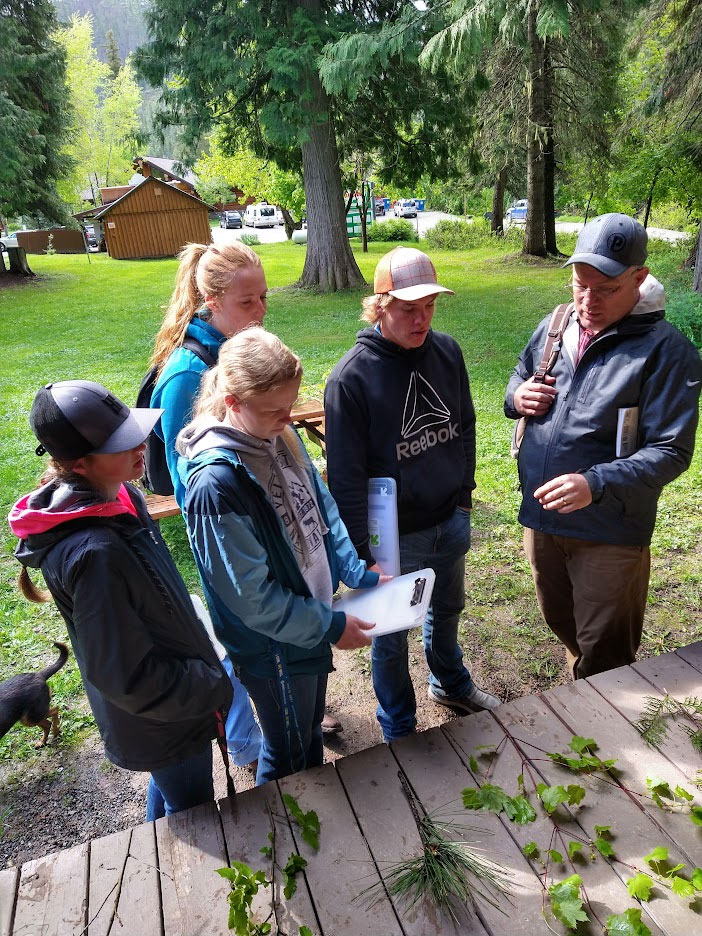
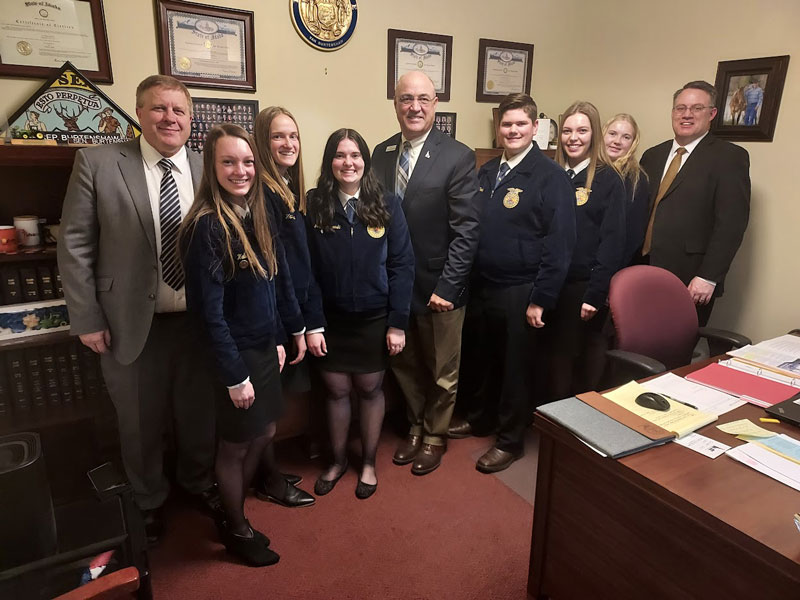
Lex Godfrey never set out to be a teacher. As a high school student in Utah, he was active in FFA. So, when he started college at Utah State University, he planned to get his degree in veterinary science. But when a trusted advisor suggested Godfrey become a teacher, he planted a seed that sprouted into a 24-year-long career.
After graduation in 1998, Godfrey accepted his first teaching job at Burley High School in Burley, Idaho. There, he met Gaylen Smyer, who would leave an indelible impression on Godfrey.
“I took over for Gaylen. He was a pillar of the community and ag education,” said Godfrey. “It was some awfully big shoes to fill. When he encouraged me to join the Idaho Agriculture Teachers Association (IATA) and the National Association of Agriculture Educators (NAAE), so I could connect with other educators, I took it to heart.”
As a new teacher, Godfrey immediately noticed the benefits of being involved with a professional association. Membership in IATA and NAAE included updates on legislation affecting agricultural education and CTE, resources for advocacy, access to awards and grants, and opportunities to hold leadership positions or join committees. In addition, it also provided plentiful opportunities to meet like-minded professionals.
“Teaching is a calling. Surrounding myself with other passionate educators was a fantastic way to share ideas and troubleshoot early in my career,” said Godfrey. “It was also a chance to network with more experienced educators.”
“Teaching is a calling. Surrounding myself with other passionate educators was a fantastic way to share ideas and troubleshoot early in my career. It was also a chance to network with more experienced educators.”
Lex Godfrey
In 2008, Godfrey’s colleague, Robert Hale, encouraged him to attend his first Career Technical Educators of Idaho (CTEI) meeting. Because he’d had such good experiences with IATA and NAAE, it didn’t take much convincing to attend. CTEI offered a state-specific perspective on CTE, plus access to educators in other pathways. Godfrey felt these new perspectives were just what he needed to develop his craft further. With ten years of teaching under his belt, Godfrey thought he was ready to share his passion with others and assume a leadership role. When the opportunity presented itself, Godfrey decided to run for CTEI President-Elect.

“When I was elected, I thought I’d have a year to shadow the current president and learn the ropes,” said Godfrey. “But she had to step down in the middle of her term, so I became president after about six months.”
Holding a leadership position early in his career accelerated Godfrey’s professional development.
“I soon discovered that, regardless of the pathway, we were all experiencing the same things,” said Godfrey. “Connecting with educators in other areas deepened my knowledge and gave me new insights into teaching and serving my students.”
Though not all educators will choose to pursue leadership positions in their professional associations, Godfrey encourages all educators to become active in their pathway-specific professional associations and CTEI. He has some specific advice for new and seasoned educators alike.
“For new teachers, professional associations are a great way to find a mentor who resonates with you. Especially early in your career, it’s important to find someone to bounce ideas off and support you,” said Godfrey. “And for seasoned educators, professional associations are an opportunity to invest in other professionals and share some of what you’ve acquired over the years.”
Godfrey has taught at Rigby High School since 2016 and has remained active in IATA, NAAE, and CTEI. In addition, he was one of the inaugural members of IDCTE’s statewide CTE Advisory Council, which is comprised of educators, administrators, and elected officials with a vested interest in Idaho’s CTE programs.
“Just having a seat at the table has made a huge difference in my career,” said Godfrey. “It means a lot whenever a colleague, legislator, or elected official calls to ask me what I think. My experience with professional associations has given me influence, and I’ve been able to use that to make an impact.”
Medical assisting program helps fill growing demand for healthcare professionals

In 2019, School District 25 Career Technical Administrator for Pocatello’s Gateway Professional Technical Education program Rhonda Naftz recognized that many students interested in health professions didn’t want to pursue a career in nursing. Naftz researched potential programs to meet her students’ interests. She discovered that medical assistants (MA) do many routine administrative and clinical functions, creating additional time for doctors and nurses to care for their patients. The labor market data showed and still reports a dire need for health professionals nationwide, resulting in high demand for Medical Assistants in hospitals, clinics, and doctor offices.
Naftz approached the Division about piloting the state’s first secondary MA program. Naftz knew the program needed an instructor with both practical and classroom experience to succeed. She found that instructor in Kristina Pasquella. A graduate from Idaho State University’s MA program, Pasquella was working full-time in a local medical facility and also adjunct faculty in the ISU MA program.
“Our program creates an amazing pipeline into medical assisting or other healthcare classes.”
Kristina Pasquella
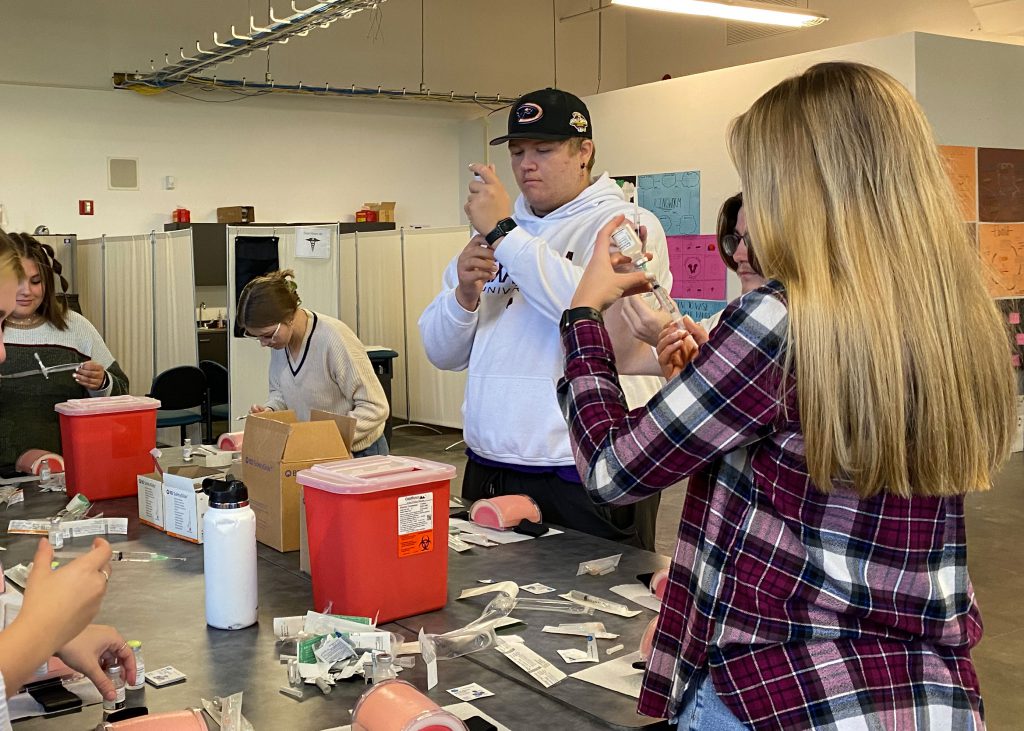
“I’d piloted quite a few education programs for mental health and healthy living programs in the past. As a kid, I always wanted to be a teacher, so creating the pilot program was really interesting and appealed to me,” said Pasquella.
Given Pasquella’s decade of experience as an MA, she worked with ISU and the State CTE Division to design a program giving students the real-world experiences they’d need to be successful. Her classroom looks like an actual medical clinic, complete with exam rooms and a waiting room stocked with posters and brochures created by her students. Students practice calling a patient from the waiting room, walking them to an exam room, taking vitals, asking questions, and recording the answers for the doctor to review. They also get to practice giving intradermal, intramuscular, and transdermal injections on an injection pad. One of their favorite activities is practicing drawing fake blood from realistic-looking silicone arms. Though students enjoy the clinical aspects of the program, they also learn clerical and administrative tasks like scheduling appointments, billing patients and insurance, and medical coding.

“Our program creates an amazing pipeline into medical assisting or other healthcare classes,” said Pasquella.
The partnership with ISU allows students to take to earn college credits for five of the six classes using Advanced Opportunities funds, meaning students pay nothing out of pocket, and their credits transfer seamlessly after graduation. About a quarter of the students who complete the program go right to work after graduation; others can go to CSI to earn a certificate or ISU to pursue a two-year degree.
Four years after its inception, 113 students have completed the program, with 43 more scheduled for this year. Interest in the program—from students and regional employers—continues to grow. Moving forward, Naftz says they’re planning on consolidating all the health profession programs into one building to better use resources and equipment and investigating adding a Certified Clinical Medical Assistant credential to the program.
“Medical programs are notoriously expensive to run, but there’s nothing like CTE to show real, tangible results and a direct correlation between investment and student success,” said Naftz. “We’re so grateful for the continued support of the Pocatello Chubbuck School District, the Division, and the legislature for this and all our CTE programs.”
Senior discovers passion and purpose through CTSOs


When current Joint Student Leadership (JSL) President Cree Milliron was a freshman at Burley High School, becoming a leader wasn’t on his radar. He’d never heard of career technical student organizations (CTSOs) in general or Business Professionals of America (BPA) in particular. He knew he loved graphic design, though, so when his web design teacher, Janet Cole, who also served as his school’s BPA advisor, encouraged him to join to show off the skills he’d acquired in her class, he jumped in with both feet and ran for chapter officer.
Though he didn’t get the position, he stuck with BPA and discovered he loved the competitions and meeting other students with the same interests as him from across the state.
“Competitions gave me the opportunity and confidence to bring my ideas to life,” said Milliron. “It was also overwhelming to see how many other students had the same interests and values as me.”
“Being involved with BPA has done so much for me. I wanted to inspire new members to see the value in joining, too.”
CREE MILLIRON
His first year was such a positive experience that Milliron ran for chapter officer again during his sophomore year and was elected chapter president. Though planning and running meetings were valuable foundations for his burgeoning leadership skills, Milliron discovered his real purpose was working with other members and sharing his passion and experience with them.
“Being involved with BPA has done so much for me,” said Milliron. “I wanted to inspire new members to see the value in joining, too.”
After two years, Milliron decided to take on more responsibility and became a State Officer. In this elevated role, he had more opportunities to interact with BPA members from across the state and get more involved with staff at the Idaho Division of Career Technical Education. Plus, he had the opportunity to meet State Officers from other CTSOs.
“When I first joined BPA, I had no idea what it was, much less that there were other CTSOs for other career pathways,” said Milliron. “Serving as a State Officer let me see that we have so much in common. We were all passionate about advocating for our organization and giving other students somewhere to belong, no matter what they’re interested in.”
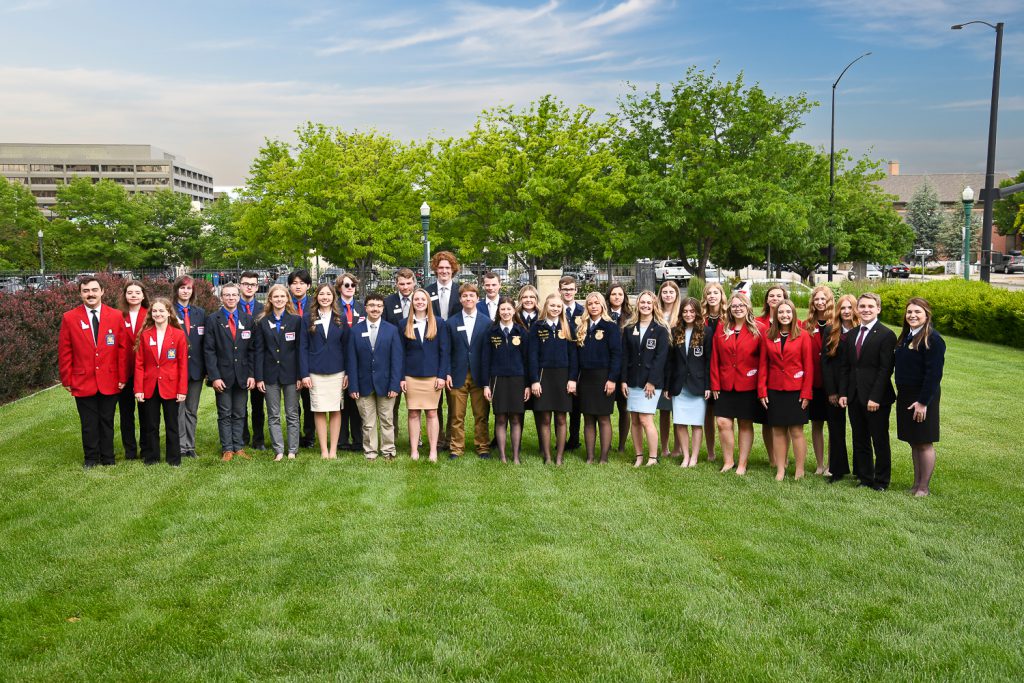
Now a senior, Milliron has continued to grow and develop as a leader and competed in two BPA National Leadership Conferences. In 2021, Milliron placed third in Promotional Photography, and his team placed seventh in Web Design. He also earned third place in Graphic Design Promotion at the 2022 State Leadership Conference.
His increasing responsibility and experiences in state and national competitions improved his leadership and communication skills and his self-confidence.
“I’ve watched myself come to life over the last four years. People always told me I was a good leader, but now I’ve had some experiences to prove that was true,” said Milliron.
Milliron is still deciding what to do after graduating, but he knows that whatever path he chooses, his experiences with CTSOs in high school will give him the skills and confidence to succeed.
“When I first joined, it was daunting to run for office or sign up for a competition. I had so many self-doubts,” said Milliron. “I remember thinking, ‘You can’t run for office; you don’t have any experience,’ or ‘You can’t win this competition; you just joined.’ But CTSOs aren’t designed for people who already know what they’re doing. They’re for people trying to figure out what they’re good at and passionate about.”
Innovative program exposes underserved students to CTE
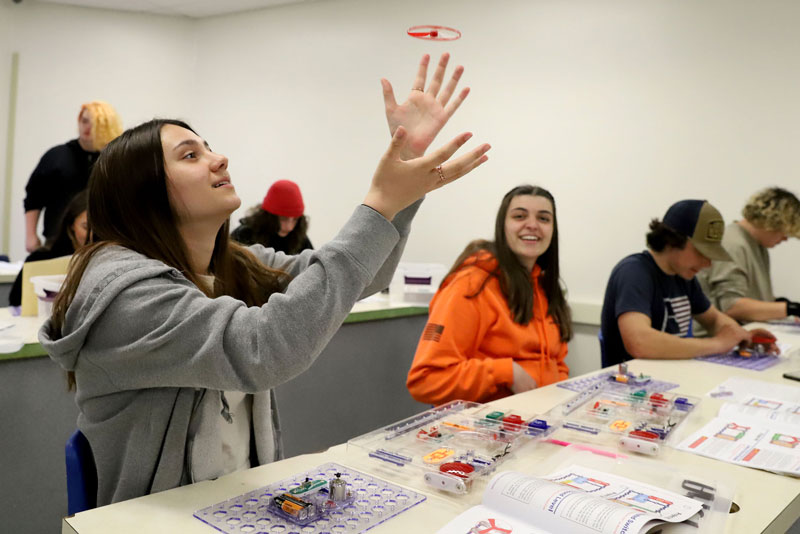
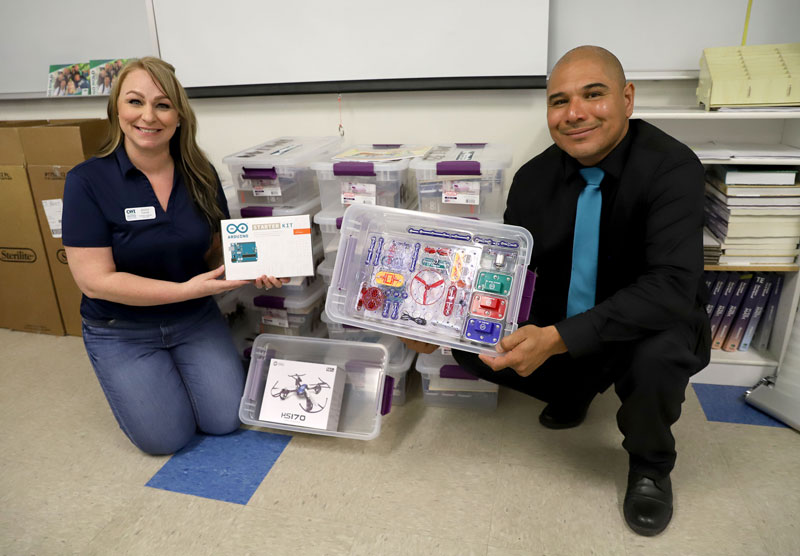
Jessica Concie and Oster Hernandez, transition coordinators for the College of Western Idaho’s (CWI) Dual Credit department, have long believed in the power of CTE. So, when Concie discovered CWI’s Center for New Directions had assembled a plastic trunk filled with a lesson plan and some hands-on activities using an included circuit board to introduce students to CWI’s Mechatronics program, she thought it would be a perfect way to spark the interest of students enrolled at alternative high schools in the Treasure Valley.
“Oster and I have a soft spot for these kids because they’re so often overlooked. A lot of them are just trying to get through high school; they’re not thinking about what’s next or what could be,” said Concie. “CTE programs tend to work really well for these students because they’re so hands-on, and students can clearly see how what they learn connects to careers.”
With the support and approval of their supervisor, Concie and Hernandez created the Pop the Trunk initiative. To expose these students to some of the 41 CTE programs offered at CWI, Concie and Hernandez approached CTE faculty about creating a week’s worth of lesson plans to introduce potential students to their CTE program. The lesson plans would be accompanied by trunks—one per student—filled with equipment and activities to support the lessons. Materials were purchased using grant money, and the program is available at no cost to students or teachers.
“CTE programs tend to work really well for these students because they’re so hands-on, and students can clearly see how what they learn connects to careers.”
Jessica Concie

Pop the Trunk launched during the 2021-2022 school year with three programs: Mechatronics, Unmanned Aerial Systems, and Drafting. Concie and Hernandez reached out to alternative high schools throughout the Treasure Valley to let them know the program was available.
“We sent out emails to see who was interested, then we dropped off a trunk with the teacher so they could see the lesson plans and play with the trunks. If they liked what they saw, we’d deliver the trunks so they could use them with their students,” said Hernandez.
Teachers and students at Meridian Academy in Meridian, Initial Point High School in Kuna, Eagle Academy in Eagle, and Middleton Academy in Middleton liked what they saw. Now in its second semester, Pop the Trunk continues to grow in scope and popularity. Additional trunks for Automotive Technology, Diesel, and Welding are being developed, and CTE faculty who help develop the trunks and the teachers at the alternative high schools will receive a $500 stipend for their help in developing and using the program starting the spring 2023 semester. In addition, other technical colleges, such as the College of Southern Idaho, have reached out to mirror the program elsewhere in the state.
“It’s been hugely successful because it allows students without access to a lot of resources or support to see what’s possible,” said Hernandez. “We’re looking at expanding the program to rural schools, too.”
Long term, Concie and Hernandez would love to see technical colleges nationwide create their own Pop the Trunk programs to help underserved and overlooked student populations discover CTE. In fact, they were accepted to give a presentation on the initiative at the ACTE Vision Conference in Las Vegas in December 2022.
“I hope schools in other states see the program is working. If we can do it in Idaho, we can do it anywhere,” said Concie. “This is a fantastic way to expose students to what CTE is all about who otherwise wouldn’t have that opportunity.”
Form meets function in packaging design program
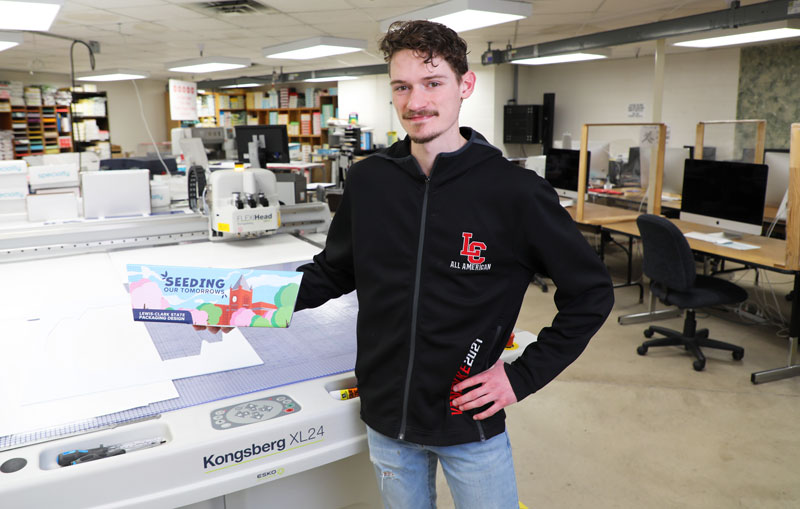
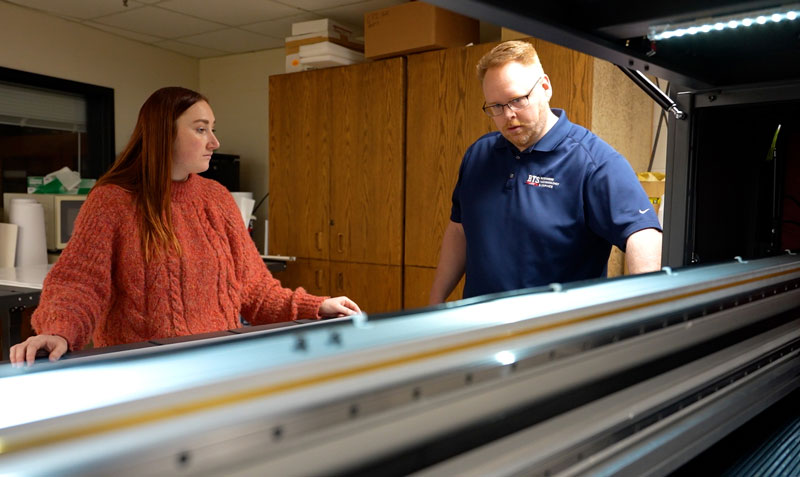
Think of all the packaging you come into contact with every day. Everything from the bottle that holds your shampoo to the tube that holds your toothpaste to the carton that holds your milk had to be designed by someone. And thanks to Assistant Professor Andy Tuschhoff, there’s a chance that the box that holds your cereal was designed by a graduate of Lewis-Clark State College’s (LCSC) Packaging Design program.
Tuschhoff began teaching at LCSC 18 years ago after the commercial printer he worked for in Boise closed.
“My supervisor at the print shop planted that seed when he told me I was really good at my job and should teach my craft to others,” said Tuschhoff. “When I moved back up to Lewiston, that seed germinated, and when an instructional aid position in the Graphic Communication program opened up at LCSC, I jumped at it.”
Initially, Tuschhoff taught students how to use graphic design software like Adobe InDesign. But when another faculty member brought in some packaging production equipment, Tuschhoff took to it and began offering packaging production as an elective course.
“Once, I gave a tour of the program to a high school sophomore who wasn’t sure where they wanted to go or what they wanted to do after high school. They looked around and said, ‘This is what I want to do!’ That’s always stuck with me.”
Andy Tuschhoff

“The Associate of Applied Science (AAS) in Graphic Communication is a good, solid program, but I knew that if we were going to prepare students for the workforce, we had to put more packaging-specific classes behind them,” said Tuschhoff.
Before long, Tuschhoff started taking on more classes and setting up an Intermediate Technical Certificate in Packaging Design. And when Tuschhoff became an assistant professor five years ago, he began developing an AAS in Packaging Design.
“I was able to travel to the WestRock packaging facility in Twin Falls to observe and work with their structural designer for a few days,” said Tuschhoff. “He and their sales manager had invaluable input for course development and expansion, as well as helping us match industry safety protocols in our lab spaces.”
Beyond the principles of design students learn in the AAS in Graphic Communications program, Tuschhoff’s students must learn how those skills translate to three-dimensional structures. The program has a partnership with the International Corrugated Packaging Foundation (ICPF), which has aided in acquiring software and equipment, such as a packaging-specific computer- aided design software called Impact, and a sample table to create true-to-life prototypes. Tuschhoff’s students participate in ICPF’s annual Careers in Corrugated conference and have access to its online career portal to connect with internship and job opportunities. “One of my students landed an internship with a local munition manufacturer’s in-house design team,” said Tuschhoff. “It went so well they were able to offer the student a full-time position.”
In addition to working with industry-standard software and equipment, students can apply what they learn to clients on campus or in the community. Last spring, his students worked with Weiser Classic Candy.
“They’re a pretty well-established company, so the client already knew how he wanted it to be represented, but it was still a cool opportunity for them to create some new container styles,” said Tuschhoff. “Those are currently in production and will be on shelves soon.”
In the future, Tuschhoff would like to see more students coming to LCSC specifically for an AAS in Packaging Design.
“Unfortunately, not enough students interested in graphic design know this career exists. It is so fun, and there’s so much opportunity on both the design and production side of things,” said Tuschhoff. “Once, I gave a tour of the program to a high school sophomore who wasn’t sure where they wanted to go or what they wanted to do after high school. They looked around and said, ‘This is what I want to do!’ That’s always stuck with me.”
North Idaho industrial mechanics program is held in high regard
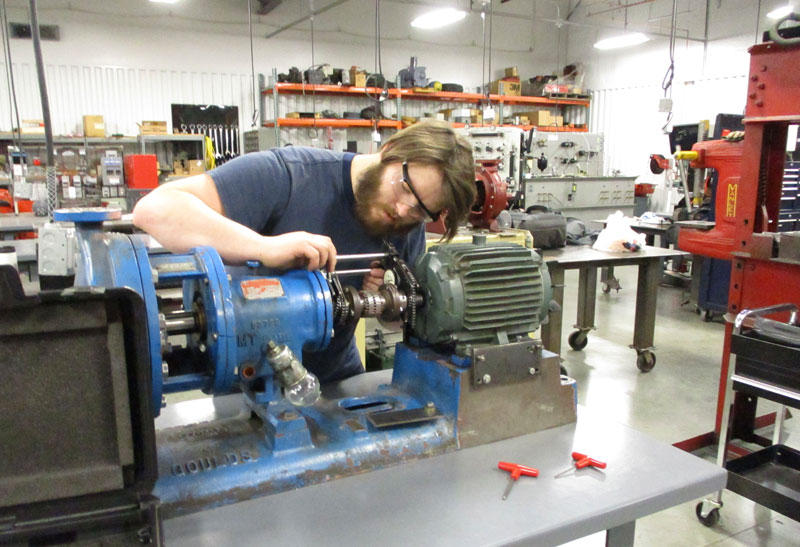

In 2009, high school agriculture teacher Shane Stockham decided to make a big career change and accept a position as the instructor for North Idaho College’s (NIC) Industrial Mechanic/Millwright program. The 11-month program prepares students for employment as industrial plant maintenance mechanics or millwrights. Students learn the basics of maintenance, fabrication, installation, and alignment of equipment used in modern industrial and manufacturing plants.
“They’re the jack of all trades,” said Stockham. “You have to be skilled in a lot of areas, such as welding, hydraulics, electricity, rigging, pipe fitting, and mechanical drive and transmission systems. You’re not doing the same thing all the time, and after 14 years in the classroom, that really appealed to me.”
Though Stockham had a mechanical background and years of experience with farm equipment and welding, he had never been a millwright himself. But he was up for the challenge and spent the better part of 2009 and 2010 boning up on his skills, conducting research, and connecting with industry partners and the previous instructor to help his students succeed. Since the basic requirements of an entry-level millwright are fairly consistent, Stockham made only a few tweaks to the curriculum. One of the most impactful changes he made was having his students visit regional lumber mills and manufacturing facilities two or three times per year.
“Seeing the equipment in action gives them a feel for the work environment and different employers so they can think about whether they’d like to work in that setting,” said Stockham.
“Seeing the equipment in action gives them a feel for the work environment and different employers so they can think about whether they’d like to work in that setting.”
Shane Stockham
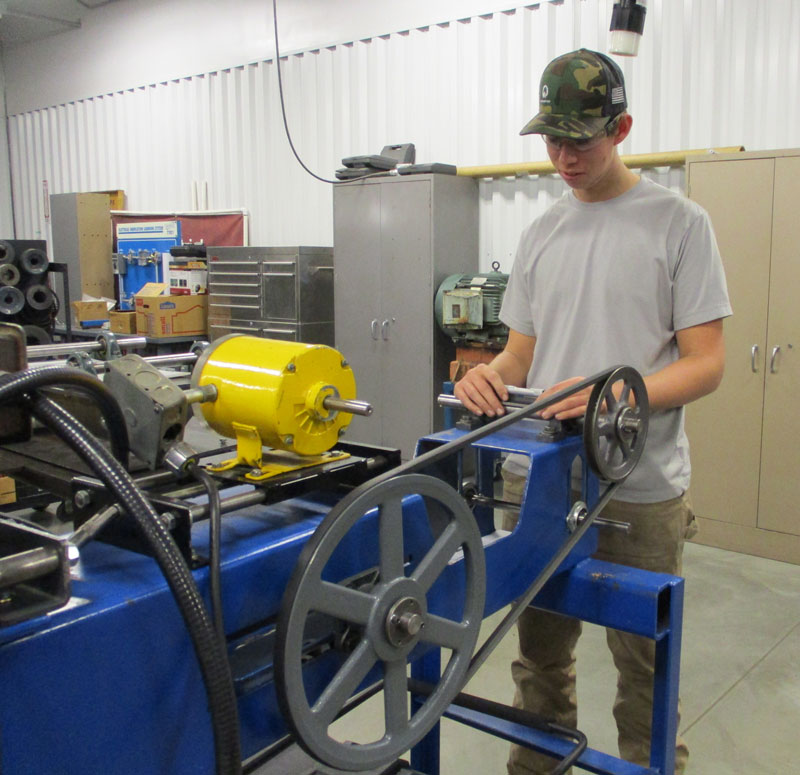
Thirteen years later, Stockham has hit his stride and takes pride in the fact that regional employers hold certificates from his program in high regard. About 90 percent of his students have jobs lined up when they graduate, and industry partners enthusiastically serve on his advisory committee, fund student scholarships, and donate materials. Employers such as the Idaho Forest Group, Stimson Lumber, and Kaiser Aluminum are eager to hire program graduates, and entry-level millwrights can expect to make $27 an hour to start with the potential to make up to $42 an hour once they achieve journeyman status. More experienced graduates have landed employment with the Army Corps of Engineers working on dams along the Columbia River or with Avista Utilities. One student even got hired by Rocky Mountain Construction in Hayden, Idaho, building roller coasters all over the world.
“Anybody who goes through the program is proud of it,” said Stockham. “It’s really hard, but when you look at where you start and where you end up, you have all these skills and can land a great job.”
Though employment opportunities abound, some graduates choose to complete the Mechatronics program and earn their associate degree.
“As everything becomes increasingly automated, mechatronics and mechanics is the wave of the future,” said Stockham. “If students can take the knowledge they learned as a millwright and understand how it drives work and the mechanics behind it, they become much more valuable workers.”
Industrial mechanics provides plenty of variety, opportunity, and competitive wages, but Stockham says his biggest struggle is creating awareness that the program and profession exist. Once potential students have an opportunity to learn about the program, they’re hooked.
“My former students are my best recruiters,” said Stockham. “Word of mouth is huge; many of my students have entered the program because they know someone who was a millwright who encouraged them to check the program out.”
Class of 2022 earns the first Workforce Readiness and Career Technical Education diplomas


More than 6,000 Idaho students will qualify for the first Workforce Readiness and Career Technical Education (CTE) diploma.
The 2021 Idaho State Legislature created the diploma to acknowledge how CTE programs enhance students’ high school experience and prepare them for the demands of today’s employers. The class of 2022 is the first to earn this designation.
“Idaho employers are increasingly seeking an educational system that better prepares students for the workforce,” said Sen. Dave Lent, R-Idaho Falls. “Since most of our population does not graduate from college, it makes sense to focus on the knowledge, skills, and abilities required for success in the workplace as part of high school graduation.”
To earn the CTE diploma, juniors or seniors must complete all graduation requirements established by the Idaho State Board of Education. In addition, they must complete a capstone course for their CTE pathway, pass a technical skills assessment, pass a workplace readiness assessment, and earn all SkillStack® microcredentials for their pathway or an approved industry certification.
“This new diploma is an opportunity for students to explore high-skill, high-demand occupations in Idaho and earn college credit while still in high school,” said Clay Long, state administrator for the Idaho Division of Career Technical Education. “In the process, they earn employer-recognized certifications, develop technical and employability skills, demonstrate college and career readiness, and enter the world confident in their ability to meet their employer’s needs.”
“Since most of our population does not graduate from college, it makes sense to focus on the knowledge, skills, and abilities required for success in the workplace as part of high school graduation.”
Sen. Dave Lent, R-Idaho Falls
The Workforce Readiness and CTE diploma also helps employers identify candidates who possess the skills necessary to succeed in the workplace and reduce the time and money invested in training new employees.
“This diploma is an example of how education is moving back to relevance and practical application,” said Lent. “Better preparing students for the transition to successful employment also significantly reduces employee turnover.”
Long agrees the diploma benefits students and employers and notes it will help make CTE courses more attractive to students and parents. “Through CTE, we’re training students for well-paying jobs they can find right here in Idaho, which helps employers address critical labor shortages,” said Long.“It’s a win-win-win for the student, their employer, and the state of Idaho.”
Veteran Firefighter Appointed to Lead Idaho Fire Service Training


Karine Johnson has been appointed as program director of Fire Service Training (FST), effective April 18, 2022. Johnson has more than 20 years of experience in fire service in positions including firefighter, deputy state fire marshal, and deputy fire chief. In addition, she served as program manager for FST when it was previously housed at the Idaho Division of Career Technical Education (IDCTE) and has spent many years working as an instructor and evaluator.
Johnson holds an associate degree in engineering technology from Oregon Polytechnic Institute, an associate degree in fire service technology from Boise State University, and a dual-emphasis bachelor’s degree in fire service technology and communication and management from Boise State University. In addition, Johnson is a certified fire investigator. Johnson has been helping to transfer International Fire Service Accreditation Congress (IFSAC) accreditation from the College of Eastern Idaho, where the program was previously housed, and ensure the continuation of services since mid-December.
“Her multi-faceted experience in all aspects of the fire service, including training and certification in both career and volunteer capacities, means she understands the needs and demands of the fire community,” said Clay Long, state administrator for IDCTE. “Karine has also taken the initiative to improve the certificate and certification issuing process.”
Her multi-faceted experience in all aspects of the fire service, including training and certification in both career and volunteer capacities, means she understands the needs and demands of the fire community
–Clay Long
Jerry Holenbeck, FST advisory council chairman and fire operations division chief with the Idaho National Laboratory, echoes Long’s sentiments on Johnson’s appointment.
“Karine has a passion for the fire service. I know she’ll listen to the fire chiefs and work with us to improve and simplify processes,” said Holenbeck. “Ultimately, this collaboration will mean we’re better able to turn out trained, qualified firefighters to protect and serve our communities.”
Fiscal year 2023 budget signed into law

The Idaho Division of Career Technical Education’s (IDCTE) fiscal year 2023 budget became law last week.
Our budget included several line items, which will be added to our FY 2023 base budget. These items included:
- $702,600 increase to secondary program added-cost funds.
- $127,000 increase to the Idaho Quality Program Standards for additional grants.
- $113,900 increase for an additional program quality manager position (including full benefits).
- $1,020,000 for postsecondary program expansion.
Additionally, JFAC approved a $10 million investment recommended by the governor to continue expanding career technical education in Idaho. While the funds are allocated differently than the governor’s recommendation, it still provides a significant one-time influx of funds to help support CTE. One significant change is the exclusion of the creation of a $5 million fund that would have allowed the Division to fund new secondary programs the school year following their approval.
JFAC’s motion included a $4 million allocation each for secondary and postsecondary expansion and modernization, $1.5 million for developing and building a data management system that integrates with ISEE, and $500,000 for secondary program prioritization and alignment.
SkillStack® and self-improvement are resident’s formula for success
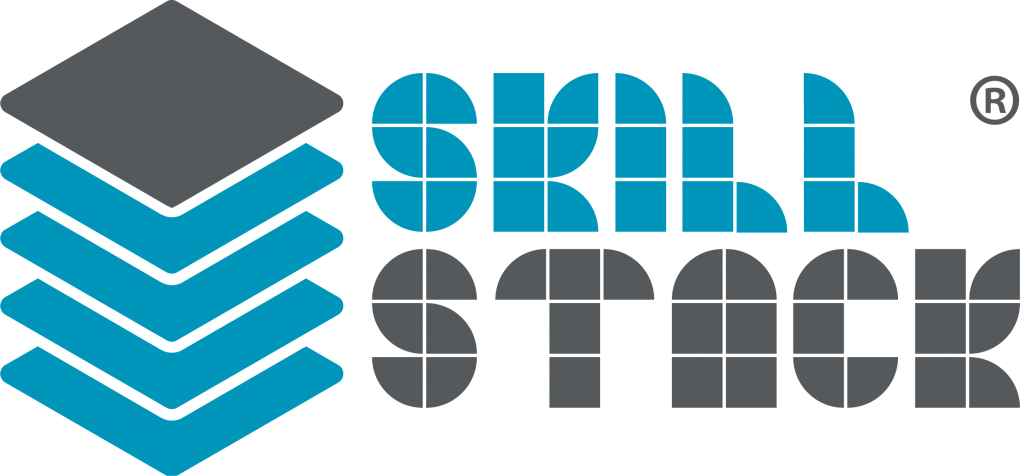
Self-improvement has always been important to Daniel Dives. When Dives worked for Metro by T-Mobile, he always strove to become a better manager and salesperson. But it wasn’t until he read “Unlimited Power” by Tony Robbins and “The 7 Habits of Highly Effective People” by Stephen Covey that he unlocked his potential and realized that business wasn’t about increasing your sales or moving product; it was about developing yourself spiritually, mentally, and physically and teaching others to do the same.
It’s no surprise that Dives was one of 169 unique learners who earned the stacked Administrative Functions microcredential in SkillStack® last year. What is surprising is that he earned it at the Idaho State Correctional Center in Kuna.
Dives is one of 2,777 residents of the Idaho Department of Correction (IDOC) taking advantage of the opportunity to learn industry-recognized credentials and certifications while in residence in 2021. IDCTE partners with IDOC and Workforce Training Centers at each technical college to validate the credentials residents earn.
“Residents can leverage the skills they’re learning to transition to the workforce,” said Taylor Stump, IDCTE’s SkillStack® and performance management coordinator. “Because the credits are transcribed through the technical colleges—and because they’re demonstrating skills aligned with industry standards and credentials—they have a lot of credibility that can help residents upon reentry.”
In addition to learning skills he can use to pursue his career goals upon his release, the classes Dives has taken while in residence have also helped him build his self-confidence. Dives, who has an associate degree in criminal justice, never learned to use Microsoft Office programs, so he’d skip classes if he had to use PowerPoint or wouldn’t speak up in meetings if he had to present.
“When I worked at Metro, we had to run reports two or three times a week. I didn’t know how to create a report, so a lot of things didn’t look right, but they let me wing it because I was good at other things,” said Dives. “As a manager, I’d have rather had my reports look more professional. Had I known then what I know now, I’d have been more confident going to a meeting and saying, ‘This is what I think.’ Before, I would’ve stayed in the background a bit more because I wasn’t confident enough to put myself forward.”
Though Dives has always known he wanted to be an entrepreneur, he’s also taken electrical wiring, electrical systems, and masonry courses through IDOC.
“I wasn’t really planning on going into construction, but it was something positive to do. I like learning, and I like the educational environment,” said Dives. “if you’re going to take classes, you might as well give it your all.”
Daniel Dives
Dives found he liked the hands-on nature of the construction classes and even earned certifications in electrical wiring, electrical systems technology and masonry from the National Center for Construction Education and Research.
“These classes helped me realize I have options and be more open-minded about my future,” said Dives. “There are some guys who’ve been released and come back three times in the five years I’ve been here, and it’s because they don’t have any plans. They don’t have any plans because they don’t think they can do something different. But when you start to realize you are intelligent, you realize you can do these things. You can take these classes. You can have a different future.”
Statewide summary: Over 18,000 students have earned microcredentials

 Official Government Website
Official Government Website